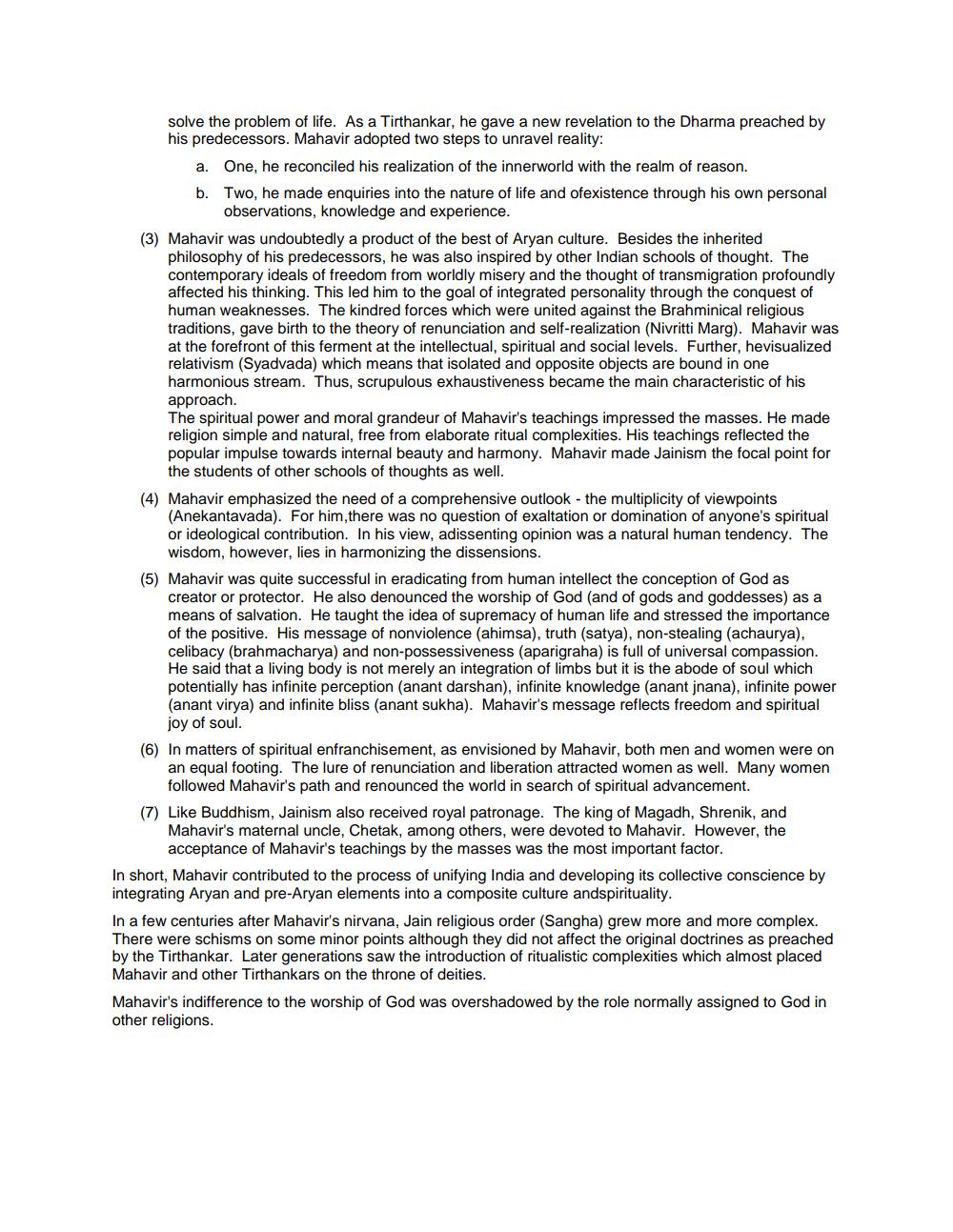________________
solve the problem of life. As a Tirthankar, he gave a new revelation to the Dharma preached by his predecessors. Mahavir adopted two steps to unravel reality:
a. One, he reconciled his realization of the innerworld with the realm of reason.
b. Two, he made enquiries into the nature of life and ofexistence through his own personal observations, knowledge and experience.
(3) Mahavir was undoubtedly a product of the best of Aryan culture. Besides the inherited philosophy of his predecessors, he was also inspired by other Indian schools of thought. The contemporary ideals of freedom from worldly misery and the thought of transmigration profoundly affected his thinking. This led him to the goal of integrated personality through the conquest of human weaknesses. The kindred forces which were united against the Brahminical religious traditions, gave birth to the theory of renunciation and self-realization (Nivritti Marg). Mahavir was at the forefront of this ferment at the intellectual, spiritual and social levels. Further, hevisualized relativism (Syadvada) which means that isolated and opposite objects are bound in one harmonious stream. Thus, scrupulous exhaustiveness became the main characteristic of his approach.
The spiritual power and moral grandeur of Mahavir's teachings impressed the masses. He made religion simple and natural, free from elaborate ritual complexities. His teachings reflected the popular impulse towards internal beauty and harmony. Mahavir made Jainism the focal point for the students of other schools of thoughts as well.
(4) Mahavir emphasized the need of a comprehensive outlook - the multiplicity of viewpoints (Anekantavada). For him, there was no question of exaltation or domination of anyone's spiritual or ideological contribution. In his view, adissenting opinion was a natural human tendency. The wisdom, however, lies in harmonizing the dissensions.
(5) Mahavir was quite successful in eradicating from human intellect the conception of God as creator or protector. He also denounced the worship of God (and of gods and goddesses) as a means of salvation. He taught the idea of supremacy of human life and stressed the importance of the positive. His message of nonviolence (ahimsa), truth (satya), non-stealing (achaurya), celibacy (brahmacharya) and non-possessiveness (aparigraha) is full of universal compassion. He said that a living body is not merely an integration of limbs but it is the abode of soul which potentially has infinite perception (anant darshan), infinite knowledge (anant jnana), infinite power (anant virya) and infinite bliss (anant sukha). Mahavir's message reflects freedom and spiritual joy of soul.
(6) In matters of spiritual enfranchisement, as envisioned by Mahavir, both men and women were on an equal footing. The lure of renunciation and liberation attracted women as well. Many women followed Mahavir's path and renounced the world in search of spiritual advancement.
(7) Like Buddhism, Jainism also received royal patronage. The king of Magadh, Shrenik, and Mahavir's maternal uncle, Chetak, among others, were devoted to Mahavir. However, the acceptance of Mahavir's teachings by the masses was the most important factor.
In short, Mahavir contributed to the process of unifying India and developing its collective conscience by integrating Aryan and pre-Aryan elements into a composite culture andspirituality.
In a few centuries after Mahavir's nirvana, Jain religious order (Sangha) grew more and more complex. There were schisms on some minor points although they did not affect the original doctrines as preached by the Tirthankar. Later generations saw the introduction of ritualistic complexities which almost placed Mahavir and other Tirthankars on the throne of deities.
Mahavir's indifference to the worship of God was overshadowed by the role normally assigned to God in other religions.




